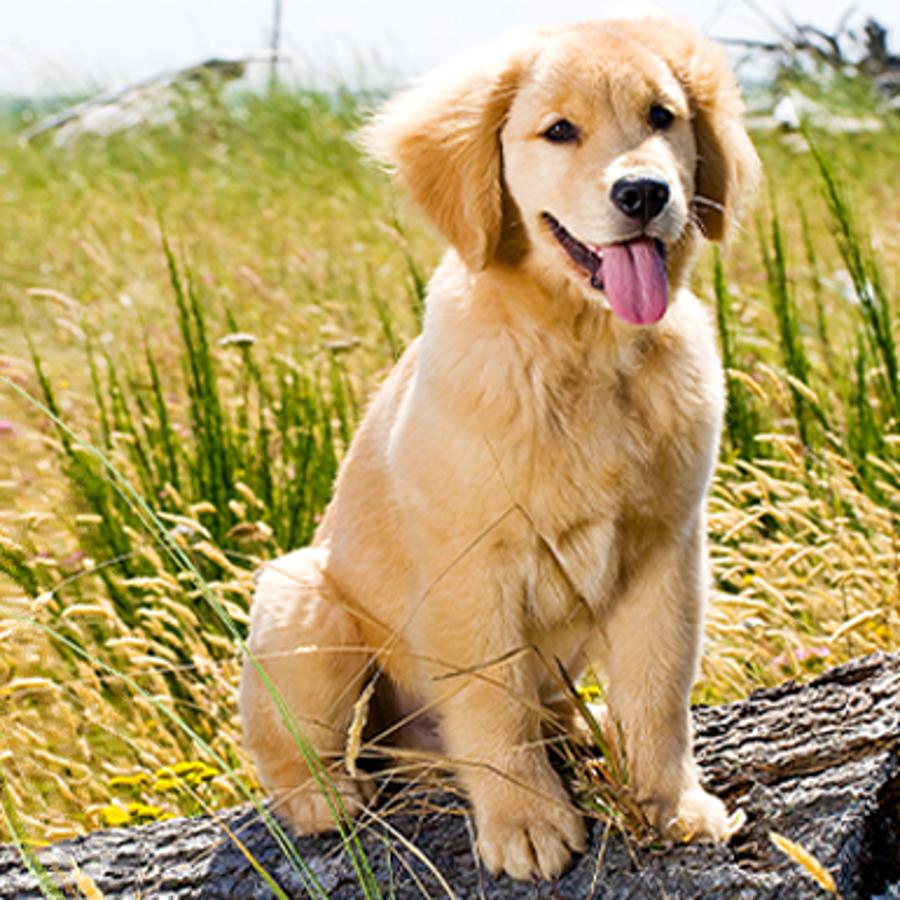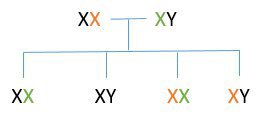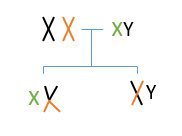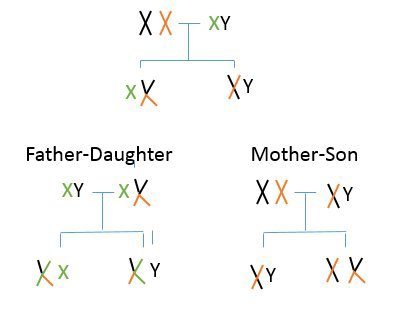
Are the inbreeding genetic risks different for mother/son vs father/daughter pairs in dogs?
February 12, 2004

- Related Topics:
- Complicated family trees,
- Intermarriage
A curious adult from the U.S. asks:
"I am a dog breeder and the question of line/inbreeding comes up often with fellow breeders. Here is my question—“Is there a higher chance of genetic flaws, undesirable diseases, etc. in mating a Mother to Son versus Father to Daughter?” Several breeders believe there is with a Mother to Son mating because of the X chromosome carrying more DNA."
What an interesting question. After a bit of thought, the quick answer is that there would for sure be no difference for the male pups. Their risk is the same whether their parents are a mom/son pair or a father/daughter pair.
The answer is a bit less clear for the female pups. Still after playing around with some diagrams, it looks like the same seems to be true for female pups as well. I am not sure I expected that to be true.
Inbreeding Problems
Inbreeding causes problems because of something called recessive alleles. Remember that humans (and dogs) have two copies of every gene. Recessive alleles are versions of a gene that only become apparent if a person has two of the same allele. If the recessive allele causes a disease or an undesirable trait, then the pup will get that disease or trait only if they inherit one allele from their mother and one from their father. There are usually no issues if a pup has just one of them.
Scientists currently think that people have around 5-10 “silent” recessive, disease-causing alleles lurking in their DNA on average. Dogs almost certainly have “silent” recessive alleles as well. Unrelated dogs will have different sets of these disease genes, although there can be overlap, especially within a breed.
The risk of problems from inbreeding comes from the fact that the parents are more likely to share the same set of these hidden genes if they are related. This means that each of their pups is more likely to get the “bad” allele from both parents, causing them to end up with the disease or genetic flaw.
Keep in mind that this isn’t guaranteed -- inbreeding only means that the risk for genetic disease is increased.
Our genes are stored on long pieces of DNA called chromosomes. Dogs have 39 pairs of chromosomes with one of each pair coming from the mother and the other from the father.
What makes each dog unique is the individual set of different gene versions scattered across their chromosomes. Inbreeding is a problem because both chromosomes in a pair can carry the exact same set of gene versions.
This is why your question about the X chromosome doesn’t really apply to male pups. Males have an X and a Y chromosome which are very different from one another. The X chromosome is large and contains many genes while the Y is small, with just a few genes that can turn a mammal into a male. Closely related parents will not affect the X for male pups (although the other 38 chromosomes are still an issue).
Of course what this also means is that males are always at a higher risk for these X-linked diseases (or diseases that are caused by genes on the X chromosome). This is why men are more likely to have hemophilia or be colorblind -- these are X-linked traits. This is why male dogs are more likely to have hemophilia too.
If males get an X chromosome with a version of a gene that causes a disease from their mother, they don’t have a chance to get a working gene from their dad. It takes just one bad gene on their single X chromosome to cause problems for male dogs (and people). They will get whatever disease their mother passes to them.
But none of this is true for female pups. They have two X chromosomes that have the same set of genes, and so can potentially have inbreeding issues with the X chromosome. Now the question is whether it matters if their parents are mother and son or father and daughter.
Mother/Son vs. Father/Daughter
As I said earlier, when parents have a child, they pass one chromosome from each pair down to the child. For dogs this means that the mother passes down 39 chromosomes and so does the father, with the end result being 78 chromosomes in total.
The chromosome that is passed down is chosen at random. Here is what this looks like for just the XY pair:

 The mother has two X chromosomes: a black and an orange, and the father has a green X chromosome and a black Y chromosome. Below them are their four possible pups.
The mother has two X chromosomes: a black and an orange, and the father has a green X chromosome and a black Y chromosome. Below them are their four possible pups.
The first female pup got a black X from the mother and a green X from the father. Her sister got an orange X and a green X. They share their father’s X chromosome. Something similar happens for the male pups, except they share their father’s Y chromosome.
Before seeing what happens with inbreeding, we need to add one more wrinkle to all of this. In reality what happens is that there is mixing between like chromosomes in a pair before they are passed on. This recombination can only happen between mom’s X’s…dad’s X and Y are too different to swap DNA.
What this means is that there are really many more than four possible combinations. Here is what one pairing might actually look like:


I have just shown one possible male and female pup but really, there are many, many possibilities because of the recombination between mom’s X chromosomes. Still, let’s use these four as our incestuous examples. Here is what these pairings might look like:


At the top I have kept the original mating. Now in the bottom two I have shown one possible outcome of a father/daughter and a mother/son mating.
First off you can see that it doesn’t really matter for the male pups. Remember, the issue is that both chromosomes will have the same bad gene and since male dogs have one X, it doesn’t matter. (Of course it matters for the rest of his chromosomes!)
For the female pups, pay attention to how much of their X’s overlap. Admittedly this is just one outcome but you can see that in each case about half of their X overlaps. In the father/daughter case the two X’s share the green DNA and in the mother/son case, they share one quarter of their black and one quarter of their orange.
Of course it didn’t have to turn out this way. It could have been that the two X’s share more or less of their DNA. It all has to do with how the DNA happened to get swapped.
But what it does mean is there doesn’t appear to be any real big difference between these types of incest. So neither is the safer route and both should have the same set of issues.
Of course, the inbreeding issues for these female pups would be for diseases that already affect the male pups! A single X is the same as two identical X’s in these cases.

Author: Dr. D. Barry Starr
Barry served as The Tech Geneticist from 2002-2018. He founded Ask-a-Geneticist, answered thousands of questions submitted by people from all around the world, and oversaw and edited all articles published during his tenure. AAG is part of the Stanford at The Tech program, which brings Stanford scientists to The Tech to answer questions for this site, as well as to run science activities with visitors at The Tech Interactive in downtown San Jose.
 Skip Navigation
Skip Navigation
